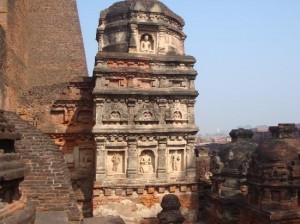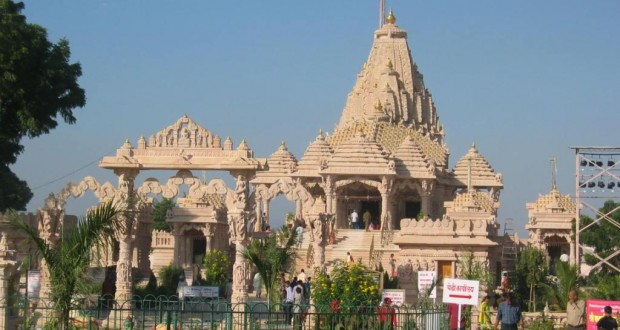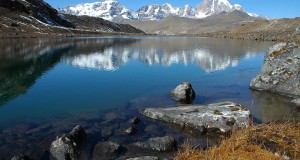several years of aggravation. Later, he contracted a horrible disease and, in remorse for  his evil acts, converted to Buddhism and supported the First Buddhist Council, held here at Rajgir. It was convened shortly after the Buddha’s attainment of enlightenment, and many of his teachings were at this point written down for posterity. In all, the Buddha spent 12 years in and around Rajgir, delivering many of his more important sermons. The founder of the Jain religion, Mahavira, also spent several years here.Today, Rajgir is being developed as a winter health spot. Little remains of the old city, it is largely in ruins, but there’s enough for a pleasant day’s sightseeing.
his evil acts, converted to Buddhism and supported the First Buddhist Council, held here at Rajgir. It was convened shortly after the Buddha’s attainment of enlightenment, and many of his teachings were at this point written down for posterity. In all, the Buddha spent 12 years in and around Rajgir, delivering many of his more important sermons. The founder of the Jain religion, Mahavira, also spent several years here.Today, Rajgir is being developed as a winter health spot. Little remains of the old city, it is largely in ruins, but there’s enough for a pleasant day’s sightseeing.
WHAT TO SEE
At the entrance of the site, buy a copy of the useful local guidebook, then a Rs275 return ticket for the Aerial Ropeway Chairlift. This operates daily, except Thursdays, and provides an entertaining ride up to the hilltop 6 km (3 3/4 miles) from the village. While airborne, you can see several ruins of the ancient fortress city dotted around the hills below, including the Jivakamarvana monastery  with large elliptical halls, a favourite retreat of the Buddha. Off the chairlift, see the dazzling new Japanese Vishwa Shanti Stupa and its adjoining Buddhist monastery.
with large elliptical halls, a favourite retreat of the Buddha. Off the chairlift, see the dazzling new Japanese Vishwa Shanti Stupa and its adjoining Buddhist monastery.
A few minutes’ walk below the chairlift is Gridhakuta, where Buddha is said to have spent much of his time in meditation, or delivering sermons.Back down in the village, hire a tonga or cycle-rickshaw to see the remaining sections of the great Cyclopean Wall, which originally comprised 48 km (30 miles) of massive undressed stones, perfectly joined, girdling the entire circuit of ancient Rajgir. Note especially the few surviving entry and exit portals. Then make the short climb up Vaibhara Hill (ask the tonga to drop you here) to Saptaparni Cave, reputedly the site of the First Buddhist Council. Nearby are some of Rajgir’s famous Hot Water Springs, and above these the rectangular natural-stone sculpture of Pippla Cave, originally a watchtower, now a hermit’s retreat. Finish off with a visit to the large Ajatshatru Fort, built in the 6th century BC by the same King Ajatshatru whom Buddha cured of a plague of boils.
WHERE TO STAY
The pilgrim circuit of Rajgir can take the better part of a day, and it is worth staying overnight. In addition to the expensive Centaur Hokke Hotel (tel 231, 245) which is primarily for the Japanese market with rooms from Rs1200 single, there are cheap rooms from Rs90 and dormitory beds at the Tourist Bungalow, the PWD Rest House, and the Youth Hostel.
GENERAL INFORMATION
The tourist office (tel 36) is in the Kund Market.





